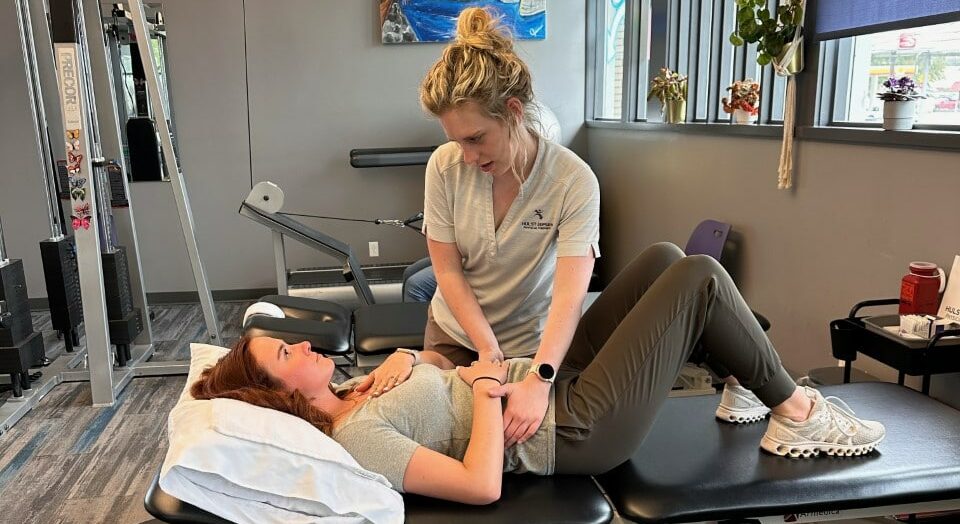The Benefits of Diaphragmatic Breathing

Breathing… we do it all day, every day, without even realizing it.
While our bodies (thankfully) know how to regulate our breathing automatically, there are many benefits to intentionally connecting with our breath and breathing intentionally with our diaphragm.
What is diaphragmatic breathing?
Also called belly breathing, diaphragmatic breathing is the practice of breathing using your diaphragm, a large muscle located at the base of your lungs, rather than with your chest. While this form of breathing comes naturally to many of us as infants, it is something that we tend to outgrow in our adult life.
Think about it– when you see a baby breathing, you often see its belly rise and fall. This is not the case in most adults. Rather in our adult lives, whether we are aware of it or not, most of us rely on our chests to breathe, rather than our diaphragm muscle. This means that we are only using our lungs at a part of our capacity, and are therefore not breathing as effectively as we could be.
While this diaphragmatic breathing might feel strange at first, with practice it will become more natural. Relearning how to breathe with our diaphragms can be beneficial not only for our physical health but also for our emotional and physical health.
Why should I practice diaphragmatic breathing?
- Breathing deeply with your diaphragm allows you to breathe more efficiently and increases how much oxygen there is in your blood.
- Breathing more efficiently reduces our heart rate, blood pressure, and allows for an improvement in muscle function.
- Diaphragmatic breathing helps soothe and regulate the nervous system, which allows your body to enter a state of “rest and digest.”
- In helping regulate the nervous system, diaphragmatic breathing is a great tool for managing anxiety and general pain.
- It also aids in digestion, blood flow, and facilitates deep core and pelvic floor activation.
How to practice diaphragmatic breathing:
- Start by lying on your back on a flat surface with your knees bent and feet planted on the ground
- Place one hand on your chest and one hand on your belly below your ribcage
- Slowly breathe in through your nose, allowing your breath to fill your belly and into the sides of your pelvis. If you do this correctly, the hand on your stomach should slowly rise, while the hand on your chest should remain relatively still until the end of your breath. At the end of your breath, your chest might move a small amount
- Then, slowly exhale through your lips. As you exhale, you should feel your stomach flatten, and the hand on your chest should stay still.
You can practice diaphragmatic breathing while sitting; however, it is often easier to determine whether or not you are breathing with your diaphragm while lying down first. Practicing diaphragmatic breathing might feel strange at first, but the more you do it, the easier it will become.
If you have questions, please don’t hesitate to call 616.256.8679 to request an appointment. You can also contact any one of 22 clinics and schedule a free consultation with one of our many skilled and knowledgeable therapists.
Resources:
https://my.clevelandclinic.org/health/articles/9445-diaphragmatic-breathing
